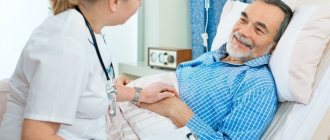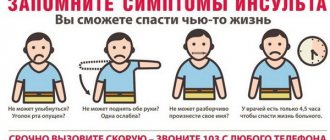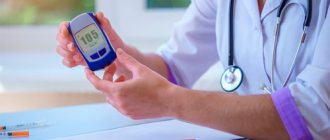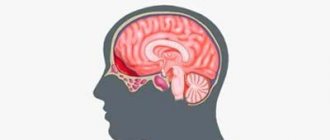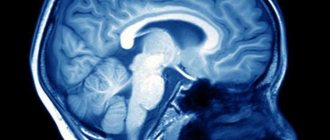Stroke is a dangerous disease that affects the human body, sometimes leading to death. Occurs due to impaired blood circulation in the brain, which causes insufficient oxygen and nutrients. The attack is accompanied by loss of consciousness and paralysis. Most people, approximately 80%, remain disabled for life after a stroke.
Restoring the body after a stroke is a long and complex process. Nutrition, as well as medication, plays a key role in the rehabilitation process. Restoration of lost functions can only occur if the body receives the necessary set of nutrients. Thus, researchers have proven the dependence of the clinical outcome of stroke on the rate and degree of compensation for protein-energy deficiency in the acute period.
Proper nutrition is the basis of a quality life
Everyone knows that the nutrients a person needs for normal functioning come into the body from the outside, that is, with food. Each product has its own effect on the composition of blood, urine, lymph, the functioning of the gastrointestinal tract, metabolism, and the condition of the body’s cells.
It is an incorrect, unbalanced diet that causes various diseases, including stroke. Therefore, if the patient’s taste habits are not changed during the rehabilitation period, a second stroke can be provoked. In the first two years, the risk of relapse varies between 4–14%. Therefore, monitoring nutrition is the primary task of people caring for the patient.
In order for the rehabilitation process to proceed as quickly as possible, it is recommended to make the diet balanced and healthy. Fiber, vitamins, antioxidants, microelements - substances that the body needs for vigor and energy. Particular importance should be given to consuming foods rich in antioxidants - substances that block the harmful effects of radicals that cause damage to blood vessels and cells.
Every patient should understand that restricting the intake of certain foods is not a temporary measure. Proper nutrition will have to become the norm.
Why does a patient need vitamins?
The first obvious answer to this question is the restoration of brain, motor and cognitive functions. Not a single biochemical process in the body takes place without the participation of vitamins, including metabolism in the brain, which is necessary for the creation of new cells - neurons. And the second reason why vitamins are needed is to prevent another stroke. Special substances that can neutralize the harmful effects of free radicals on the body, so-called antioxidants, are contained in vitamins. Their regular use can prevent relapse of the disease. Now about each vitamin letter in order.
A. Promotes the growth of new cells like no other. Plus it has an antioxidant effect. The use of this vitamin allows the body to strengthen its defenses by producing interferon. Without useful “ashka,” the synthesis of taurine, a substance responsible for the transmission of nerve impulses, does not take place. What to eat to get: Egg yolk, kidney, beef liver, butter, yellow fruits and leafy vegetables, carrots.
By the way! Carrots lower cholesterol levels in the body. Those who eat it every day are 68% less likely to have another stroke compared to those who neglect this orange vegetable.
B. Vitamins of this group received a self-explanatory name – “vitamins for the brain.” They are actively involved in the processing of nutrients and energy exchange processes. Normalize blood pressure and improve blood circulation in the affected areas of the brain. B6 and B12 are involved in the regeneration of nerve tissue. What to eat to get: bran, wheat seeds, walnuts, peas, broccoli, asparagus, spinach, fish.
C. The second name is ascorbic acid. Builds a barrier against the penetration of pathogenic bacteria into the body. Restores blood vessels, makes them elastic. It is very necessary for hypertensive patients, as it quickly reduces blood pressure. What to eat to get: citrus fruits, sea buckthorn, black currants, kiwi, cauliflower, tomatoes, apples, rose hips, potatoes, sauerkraut.
D. Strengthens the walls of blood vessels, thereby preventing their rupture and hemorrhage into various tissues. Reduces the risk of cholesterol plaques appearing on the walls. Prevents the appearance of blood clots. Reduces blood pressure. What to eat to get: fish, fish oil, butter, hard cheese.
By the way! The body is able to synthesize this vitamin independently under the influence of sunlight.
E. Strong antioxidant. Daily use reduces the risk of recurrent stroke. It prevents oxygen starvation of brain cells, thereby preventing their death. If the body does not receive the proper amount of this vitamin (daily dose 10 g), uncoordination of movements may develop. What to eat to get: nuts, oatmeal, soy, greens, beef liver, olive oil, eggs, milk, sea fish.
R. The main vitamin for the protection of capillaries - combines the group of flavonoids. Increases the elasticity of capillaries and reduces their permeability. Responsible for normalizing blood composition, participates in the process of restoration of brain cells after circulatory disorders. What to eat to get: buckwheat (and it is better not to cook buckwheat, but to pour boiling water over it to preserve all the microelements), green walnuts, cabbage, chokeberries, grapes, raspberries, black currants, citrus fruits, rose hips.
By the way! This vitamin can partially compensate for the lack of ascorbic acid in the body.
Omega-3 and omega-6 polyunsaturated fatty acids. They are part of phospholipids and are involved in the construction of cell membranes. They have an antioxidant effect by neutralizing toxic oxidation products. They act as three shields in the body: protective, restorative and inhibiting the development of cancer cells. Important to remember! The body does not produce these acids itself, but receives them only from food. What to eat to get: fatty fish, seafood, legumes, walnuts, prunes, sunflower oil, flaxseed.
By the way! All the beneficial properties of fatty acids are achieved in full effect with an ideal balance of omega-3, omega-6 and vitamin D in the body.
According to research by Swedish scientists, those who eat herring at least twice a week have a low risk of stroke.
Features of eating after a stroke
Anyone who has had a stroke is very weak at first. The process of eating and even drinking requires enormous effort from the patient. At first, about three weeks after the attack, the patient is fed in a supine or semi-lying position. You should start with rare homogeneous food: pureed viscous porridges and soups, vegetable purees, etc. After three days, the diet can be expanded. You can feed the patient in the following ways:
- Traditional - using a spoon and a sippy cup. Suitable for patients who still have food reflexes after an attack.
- Enteral - performed using a probe. It is prescribed for those who have impaired swallowing and chewing reflexes and whose digestive organs function normally. Enteral nutrition in the early stages can effectively solve the problem of “empty intestines.”
- Parenteral - administration of special solutions enriched with vitamins and microelements intravenously. It is usually prescribed in the first days after an attack, and also if the patient has impaired food reflexes and gastrointestinal function.
Your doctor will tell you which method of nutrition is best for a person who has had a stroke. Sometimes patients after a stroke refuse to eat. This is caused by depression, which accompanies many victims. In this case, medical personnel force-feed the patient using a tube. Through it, nutrients enter the body.
When the patient gets a little stronger, he can be transferred to eating food on his own. During this period, you can massage the hands, supplementing it with special gymnastics, strengthening the upper limbs, teaching the patient to independently hold a spoon, cup, and other utensils.
Complex therapy of ischemic cerebral stroke
It is known that in the absence of adequate therapy, approximately 2 million neurons die within ten minutes of ischemia. Each stage of the ischemic cascade is a potential target for therapeutic intervention. The earlier neuroprotective treatment is started, the greater the chances of success, the less the degree of damage to the brain substance.
Doctors at the Yusupov Hospital begin complex therapy for ischemic stroke immediately after the patient is admitted to the neurology department and an accurate diagnosis is established. Neurologists draw up treatment regimens for patients with cerebral infarction individually, taking into account which vessel has impaired blood flow, the size of the ischemic focus, and how damaged the nerve cells around the area of cerebral infarction are. Due to the fact that the clinic conducts research on modern drugs for the treatment of acute cerebrovascular accidents, patients at the Yusupov Hospital have the opportunity to receive the most modern drugs.
Drug treatment of acute ischemic stroke includes basic and specific therapy. Basic therapy consists of:
- measures to support respiratory and circulatory functions;
- correction of metabolic disorders and the volume of circulating fluid;
- blood pressure control.
The main goal of intensive care is to prevent oxygen deprivation of brain tissue and the associated increase in brain damage. To ensure adequate water-electrolyte balance and blood flow, doctors at the Yusupov Hospital provide infusion therapy to patients with ischemic stroke. The purpose of infusion therapy is:
- achieving blood thinning;
- maintaining adequate cerebral perfusion pressure (a physiological indicator characterizing the level of blood supply) not lower than 70 mm Hg. Art. to eliminate ischemia and oxygen starvation of neurons;
- correction of electrolyte disturbances, primarily high or low sodium levels in the blood.
Doctors at the Yusupov Hospital achieve a normal level of cerebral perfusion pressure in patients with ischemic stroke by increasing systemic arterial pressure and decreasing intracranial pressure. To increase blood pressure, crystalloid solutions and sympathomimetics are administered intravenously.
In case of ischemic stroke, doctors at the Yusupov Hospital maintain the patient’s circulating blood volume at the proper level and prevent the development of hypovolemia, which increases the risk of low blood pressure and reduces central perfusion pressure. These changes in the equilibrium of the internal environment of the body lead to vasodilation and increased intracranial pressure.
To maintain the overall water-electrolyte balance and ensure sufficient blood flow in the cerebral vessels, patients with ischemic stroke in the neurology clinic are administered 30-35 ml/kg/day of fluid. Patients who, upon admission to the Yusupov Hospital, have low blood pressure, elevated hematocrit, dry mucous membranes and no decompensated heart failure, are prescribed infusion therapy in a volume of 1000-1500 ml of Ringer's solution or 0.9% sodium chloride solution. Patients with developed cerebral edema are maintained in a negative water balance.
Principles of nutrition for a patient after a stroke
- food should be easily digestible - the body needs to expend energy on recovering from illness, and not on digesting food;
- food should be highly nutritious, while low in calories - the basis for rapid recovery after an attack;
- preference should be given to products that do not contain cholesterol;
- you cannot eat hot or cold food, dishes should be at room temperature or warm, then they are digested faster;
- you need to drink 1.5–2 liters of fluid per day to maintain the correct water-salt balance;
- The portion size should be reduced and the number of meals increased;
- Avoid drinking alcohol and smoking.
The general meaning of all recommendations regarding the organization of nutrition for post-stroke patients is a slight reduction in calories from fats and carbohydrates. After all, excess body weight is a scientifically proven risk factor that can lead to a recurrent stroke.
In addition, all substances that stimulate the cardiovascular and nervous systems are significantly limited. Preference is given to products with a high content of potassium, magnesium, and lipotropic substances. Products that have an alkalizing effect will also be useful, which has a beneficial effect on speedy recovery from inflammatory processes.
Pressure surges
– Nadezhda Konstantinovna, how does the well-being of an elderly person change in very hot weather, what are the most dangerous symptoms?
– Heat is a serious test for the body of an elderly person, who, as a rule, has several diseases. First of all, the load on the cardiovascular system increases, the heart rate increases. But blood pressure can behave differently: for some it increases, for others it decreases. You need to regularly measure your blood pressure and take medications on time.
Dehydration, i.e. dehydration, is very dangerous. In the heat, the evaporation of moisture from the skin and mucous membranes increases, a person loses not only water, but also electrolytes - sodium, potassium, calcium salts in the blood . And you need to replenish fluid on time. However, older people may have problems with this. As many people age, their thirst becomes worse. There are patients who, due to a geriatric syndrome such as urinary incontinence , specifically try to limit their water intake. Others try to drink less to avoid excessive sweating . And a decrease in fluid in the body leads to a whole cascade of adverse reactions. In particular, the risk of thrombosis increases, as blood . And this, in turn, can lead to heart attack , stroke, deep vein thrombosis of the lower extremities - depending on in which vessels the blood clots have formed.
– Some older people complain of weakness and dizziness in the heat...
– This may also be a consequence of the fact that they do not drink enough fluids. Due to dehydration, orthostatic reactions develop. When the body position changes, blood pressure does not increase (as is normal), but, on the contrary, decreases significantly. brain worsens . As a result, dizziness , darkening of the eyes , a person may lose consciousness and fall, and be seriously injured. Brain damage can be more serious when acute cognitive impairment develops due to dehydration and overheating, delusions and hallucinations (delirium) appear. Such disorders are possible in very elderly people. It starts with the fact that a person simply becomes very inattentive. It would seem not scary. But in reality, since the brain controls all functions, this affects all the activities of the body.
What you can and cannot eat after a stroke
A balanced diet will help replenish the body with the micro- and macroelements necessary to restore health, as well as vitamins. The diet should consist of the following products:
- Vegetables, fruits - the maximum amount of vitamins. You need to consume about 400 grams every day. You can eat carrots, eggplants, different varieties of cabbage, zucchini, tomatoes, cucumbers, potatoes, beets, pumpkin, peppers, and herbs. Fruits - plums, apples, peaches, apricots, bananas (rich in potassium, help restore blood vessels). Natural products are preferably consumed boiled or baked, less often raw.
- Drinks - natural juices, fruit drinks, compotes, herbal decoctions, rosehip infusion, green and weak black tea - are now table favorites.
- Dairy products. Fermented milk dishes, cottage cheese (you can make casseroles, cheesecakes, dumplings) will help you forget about constipation. Avoid taking fatty dairy products: condensed milk, cream, cheeses. Milk-based products can be consumed a couple of times a week.
- Low-fat boiled fish. Can be included in the diet 2-3 times a week. The choice is worth stopping at salmon, mackerel, sardine, pike, cod, perch, navaga, and flounder.
- Meat. Promotes the regeneration of nerve cells, helps gain muscle mass. You can eat dietary meat of turkey, rabbit, chicken, as well as veal.
- Eggs. About 3-4 pieces per week.
It is also worth remembering that products that require heat treatment are best boiled or baked. Can be steamed. Fried foods should not be consumed.
Boil soups and borscht only with vegetable broth. Soups made from legumes, as well as soups with meat and fish broths, are excluded.
Porridges and vegetables can be seasoned with vegetable oils.
For piquancy, it is permissible to add seasonings to dishes - mint, rosemary, parsley, bay leaf, lemon, suneli hops, crushed and dried black currant leaves, cherries, seeds, nuts, honey, jam.
For sweets you can use biscuits and marmalade, if bread, then only grades I and II.
Don't bring it to the emergency room
– Diabetes mellitus is a very common diagnosis in older people. What do they need to remember in hot weather?
– Yes, the most vulnerable among all patients are patients with metabolic syndrome. And diabetes mellitus is a prime example. Already initially, these patients have problems associated with the regulation of not only carbohydrate metabolism, but also protein and electrolyte metabolism. Sometimes they are overweight. Therefore, in hot conditions there may be higher blood , but what is even more dangerous are episodes of hypoglycemia in patients who are on insulin therapy. Hypoglycemic conditions can quickly lead to very serious complications. Therefore, it is more important than ever for such patients to more carefully monitor medications, insulin doses, and follow a diet with a reduced amount of simple carbohydrates.
– What could be the consequences of prolonged heat?
– Decreased functional status may occur. In hot weather, it is very difficult to maintain physical activity. Elderly people stay at home, sometimes in bed, and stop moving. This very quickly leads to the development of muscle weakness and functional deficits. You should definitely take a walk, for example, in the very early morning hours in a park, along the shore of a pond, or at least go out and just sit in the shade of trees or buildings.
Another danger is nutritional deficiency. Of course, in the heat, appetite decreases, but you can’t completely give up food. Juicy vegetables, fruits with a high liquid content, and fermented milk products (if there is no intolerance) are very useful.
Those who have very elderly relatives should pay closer attention to their hygiene and avoid diaper rash and abrasions on the skin of an elderly person. In the heat, infection of these tissues can occur very quickly.
– Is the number of visits to doctors from older patients increasing?
– In hot weather, the flow of elderly patients with heart attacks, strokes, and injuries increases (if a weakened elderly person falls, the injury may be incompatible with life). There are especially dangerous outcomes among people with many chronic diseases, diabetes mellitus .
On hot days , as a rule, there are not many calls the clinic It is often difficult for an elderly person to get organized, come and see a doctor in the heat. And that's the problem. As a result, there are emergency calls - heart attack , stroke, falls, trauma, hypertensive crisis. For example, in Germany it was calculated that in hot weather, every third reason for hospitalization in geriatric patients is associated with dehydration (the first two are cardiovascular diseases and injuries). It is dehydration that causes emergency hospitalization. While the problem can be solved very simply: control the amount of water you drink. It is no coincidence that in medical institutions, especially in geriatric departments, medical staff walk through the rooms with water an additional 2-3 times a day and ask patients to drink more. Therefore, in the family, relatives should pay more attention not only to what pills the elderly person has taken, but also to whether he drinks enough water.
It is worth giving up:
- salted, pickled and pickled vegetables;
- mayonnaise, various sauces;
- fried and smoked products;
- fatty meat and dairy dishes;
- sausages, sausages;
- fats of animal origin;
- red and black caviar;
- meat and fish broths;
- baked goods, cakes;
- coffee, cocoa, chocolate;
- radishes, radishes, garlic, onions, mushrooms;
- hot spices, mustard, pepper, horseradish.
It is strictly not recommended to overeat or deviate from the diet. Failure to comply with nutritional rules can significantly delay the moment of recovery and cause the development of a second attack.
How to choose a diet after a stroke?
The most common diets after a stroke are: anti-sclerotic, Table No. 10 according to Pevzner. The choice of diet after a stroke should be determined not only by the patient’s personal taste preferences, but also by the type of stroke suffered. If the stroke was caused by arterial hypertension, then special attention should be paid to excluding fatty and salty foods, strong coffee and tea from the menu. If the stroke you suffered was ischemic, then you should avoid fatty, fried foods, as well as foods that provoke the development of atherosclerotic lesions of the vascular walls.
The principle of eating, regardless of the chosen diet option, should be as follows:
- breakfast - an hour after the patient wakes up;
- each subsequent meal at an interval of three hours;
- dinner - two hours before going to bed.
The duration of rehabilitation after a stroke depends on the severity of the disease and the timeliness of therapy.
If the patient has a positive attitude, believes in himself, and follows all the doctor’s recommendations, the result will not be long in coming. The task of family and friends is to help and support the patient in every possible way, to instill in him confidence in his own abilities. In contact with

